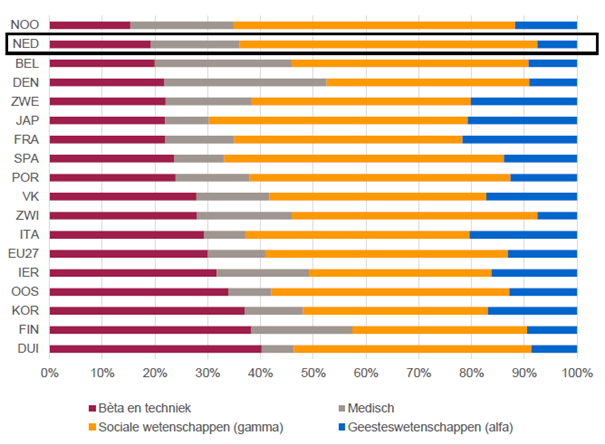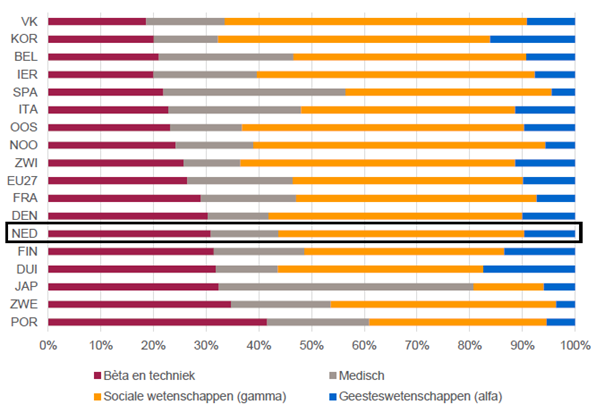Relatively few Bachelor's in the field
Netherlands spends less on STEM than other countries

The Netherlands is lagging behind its international competitors in spending on STEM, education minister Robber Dijkgraaf has revealed. The number of new Bachelor’s students in STEM programmes is also relatively low.
Two parties, VVD and ChristenUnie, asked for greater clarity on how research and education funding is distributed across science, technology, engineering and maths in the Netherlands, compared to other countries. Dijkgraaf bases his written response on a range of analyses.
Research
Total research spending increased by 36 percent between 2013 and 2021, according to the Rathenau Institute. Roughly speaking, this applies to all fields, from STEM and medical research to the arts and social sciences.
Compared to other countries, the Netherlands spent relatively little on STEM research and invested far more in the medical sector. Overall, many countries spend considerably more on research percentage-wise than the Netherlands.

Bachelor’s students
Dijkgraaf also notes that the data available provides an insufficient basis for a reliable comparison of educational resources between countries. “The differences between the various funding systems are too great.” However, it is possible to compare the distribution of student numbers.
For instance, it appears that relatively few undergraduate students at Dutch higher education institutions opt for a STEM programme. Over half pursue a degree in social sciences, which is higher than in other countries.

However, the proportion of Dutch students taking a STEM programme at Master’s level is relatively high. The research indicates a sharp rise between 2013 and 2021.
